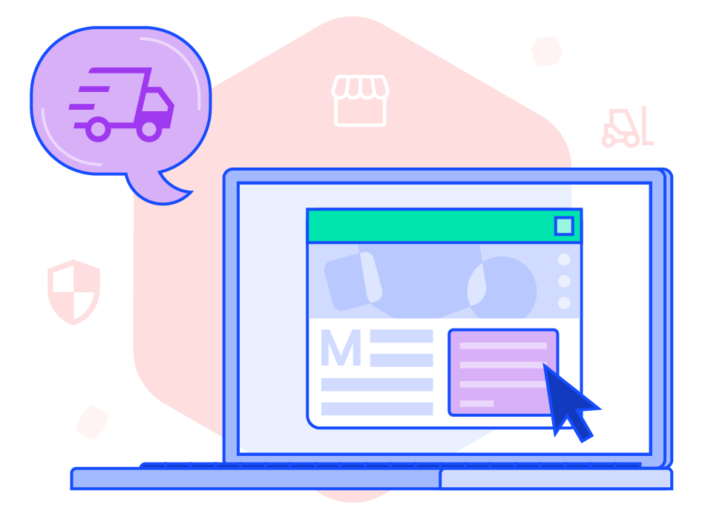It’s no secret: efficiently packing, palletizing, and loading goods saves money, materials, and time. But simply knowing the benefits of optimized planning and packing isn’t enough.
To see meaningful efficiency gains in their warehouses, businesses need to start with the right technology.
For some, advanced warehouse robotics are the best solution. But others aren’t in a position to invest heavily in robotics; they just need a way to make smarter packing decisions without relying on workers’ gut feelings. And even organizations that use robots need a system that powers automatic decision-making.
In a recent livestream with Supply Chain Now, EasyPost’s John Wharff joined hosts Scott Luton and Tandreia Bellamy to talk about why load planning is so essential—and so complex. In this article, we’ve highlighted some of the key moments in the conversation.
The content has been lightly edited for clarity and concision.
Question: What is load planning?
Answer: I always think of load planning as where the digital becomes the physical. There are a whole bunch of different shippers in every different industry, and regardless of what operation they’re doing, at some point, an order becomes an actual physical thing that needs to be handled.
We’re now putting things in boxes, we’re building pallets with those boxes, and then we have to get those boxes into some type of container to get them delivered. Load planning is an umbrella term that covers all of that.
How do we most efficiently pack boxes, pallets, trucks, planes, and train cars, so that we’re sure we’re getting the best value we possibly can and we’re being as efficient as humanly possible?
Question: How can businesses improve load planning efficiency?
Answer: When I think about the easiest things that people are usually missing out on, they come down to two factors that are very, very important: cost per parcel and fill rate.
If you’re in a warehouse and you’re not looking at those, you need to start. You need to understand how much is it costing me to get every single box out, and what can I do to drive those costs down? How efficiently am I using the space that is allotted to me?
Question: What role does automation play in modern load planning?
Answer: Almost every single software that shippers are using these days usually has two different types of flavors and implementations. There’s the UI-based—you have an operator standing in [front of] a screen, they’re processing orders, they’re making decisions, they’re effectuating every step of the process.
But almost all of these technical solutions also have a behind-the-scenes black box where it is just computers sharing data back and forth. And this is where you get into the high-speed, really impressive automated warehouse environments.
Orders drop, computers talk, things get out the door, and you are confident that you are making every step you can towards efficiency and cost savings.
Question: What trends are shaping the future of load planning?
Answer: A greater shift towards automation—automated systems that are running conveyor belts that are picking, packing, and actually loading things into trucks. That’s going to be huge moving into the future.
Another trend is this huge, glorious push towards sustainability. How can we be better partners with the globe? How can we make sure that we’re making intelligent decisions, cutting down on waste, whether it’s cardboard and plastic or fuel?
The other biggest trend is the same trend that has existed since the first box was shipped, which is, how can I do this all and save money in the long run? That will always be one of the biggest considerations that every organization has to take into account.
Question: How can companies future-proof their logistics strategies?
Answer: The first step is to get good data. You can’t make good decisions if you don’t know what you’ve got. Everybody hates audits. Everybody hates going out with the scan gun. They hate measuring products. Do it. The sooner you do it, the better you’re going to be set up for the future.
Get good data. Understand what your data’s telling you, and then find someone who can help you make intelligent decisions.
Question: How does MagicLogic help?
Answer: MagicLogic can look at actual consumer user data, and it can do everything from suggesting the best box sizes to giving written instructions for how the boxes should be packed.
It can then move on to pallets. It can take into consideration the orientation that boxes need to be placed in—things that have to be on the bottom, have to be on the top, can only be on the outside.
It can do everything from the very beginning of getting things into boxes all the way through a step-by-step process until you’re loading it onto the truck. It can take into consideration, are you doing hand loads with real people? Are you loading by forklift? Are you loading with robotic arms?
Question: What sets MagicLogic apart?
Answer: There’s never a worse partner than someone who comes in and says, “We want to help you, and the way that we’re going to help you is change everything you’re doing.”
Instead, what we focus on with the initial implementations of MagicLogic is looking at what you have today. We’re going to ingest your data. What are your product sizes? What box sizes are you working with? Do your products compress? Do they nest?
What do we need to know about the specific things that you are shipping so that we can enable you to make the best decisions for where you are today?
There’s a lot of really important warehouse processes where changing them is expensive, and we get that. So let’s get in, see what you have today, prove the ROI. And that frees you up to make some of those more expensive process changes down the road.
Learn more about load planning
With the right load planning strategy, businesses can increase warehouse efficiency, decrease costs, and keep customers satisfied with on-time, undamaged deliveries. If you’re interested in learning more about load planning, check out our resources on the MagicLogic blog.
Looking to get started with load planning technology?
Get in touch with our team to schedule a custom demo. Using your own fulfillment data, we’ll show you exactly how MagicLogic can transform your warehouse(s).



